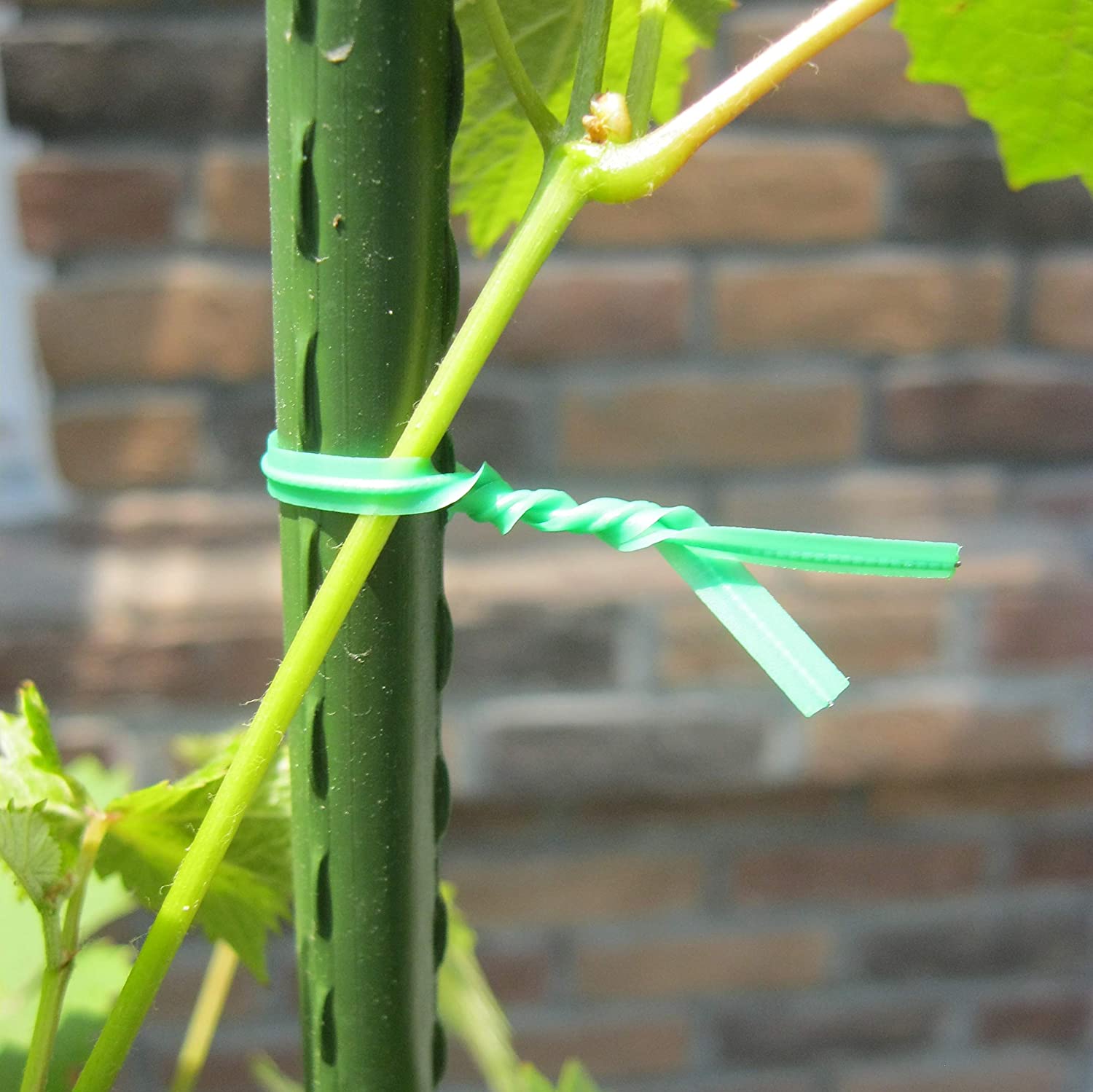As plants grow, they often need some extra support to stay upright, climb properly, or grow in the desired direction. Tying plants is an easy and effective way to provide this support But what exactly should you use to tie plants without causing damage? Read on for a guide to selecting the best plant tie materials
Why Use Plant Ties
Tying plants serves several beneficial purposes:
-
Provides support for tall, top-heavy plants prone to drooping like tomatoes, peppers, and vines
-
Trains climbing plants like beans, cucumbers, and grapes to grow upwards properly on trellises and other structures
-
Allows you to manipulate growth direction, such as training branches horizontally along fences or walls.
-
Secures plants to stakes or posts to protect from wind damage.
-
Holds up heavy flower heads on plants like dahlias and peonies.
-
Straightens potted plants growing at an angle.
Features of Ideal Plant Ties
When selecting materials to tie plants, look for these ideal features:
- Soft and stretchy to avoid damage as plants expand
- Weather resistant without degrading from sun exposure
- Biodegradable or reusable to avoid littering the garden
- Available in long lengths or strips for versatility
- Gentle on stems, branches, and trunks as plants flex
5 Great Options for Plant Ties
Based on these criteria, here are 5 of the top materials to use for tying plants:
1. Cotton Twine or String
100% natural cotton twine is a classic choice that’s soft, strong, and weather-resistant. The natural fibers won’t cut into plant tissues. Look for undyed cotton that won’t bleed color onto stems.
2. Fabric Strips
Old t-shirts, sheets, or other soft fabrics torn into long strips make perfect recyclable plant ties. The stretchy fabric flexes with the plant for a gentle hold. Choose natural fabrics like cotton over synthetics.
3. Coconut Coir
Coconut coir twine offers similar natural fiber benefits as cotton, but resists stretching and lasts longer outdoors. It blends in well aesthetically.
4. Raffia
Raffia is soft and pliable, making it ideal for delicate seedlings and herb branches. It’s biodegradable but doesn’t hold up long term outside.
5. Bamboo Ties
For an eco-friendly option, strips of bamboo make strong natural ties. Fresh strips are pliable until drying stiffens them.
Materials to Avoid for Plant Ties
On the flip side, these materials may harm plants and should be avoided:
- Plastic-coated wire or twist ties
- Nylon, polyester, or plastic strings
- Baling twine or rough jute
- Narrow wire, pipe cleaners
- anything that can cut into bark and stems
The wrong ties also introduce non-biodegradable waste into gardens that persist for years. By selecting soft, natural tie materials suited to the individual plant’s needs, you can provide safe and effective support for your plants to thrive.
MY Favorite EASY Tomato Plant STAKE & Tie Material FREE DIY Support Cage Trellis Cucumbers Peppers
FAQ
What is best to tie plants with?
What can I substitute for plant ties?
What can I use to tie a plant to a stake?
- The Ultimate Guide to Growing Strawberries in Raised Beds - August 8, 2025
- No-Dig Garden Beds: The Easiest Way to Grow a Beautiful Garden - August 6, 2025
- How to Protect and Preserve Wood for Raised Garden Beds - August 6, 2025

